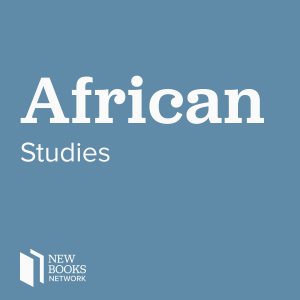
Andrew Curran, “The Anatomy of Blackness: Science and Slavery in an Age of Enlightenment” (Johns Hopkins UP, 2011)
 2011-10-10
2011-10-10
We’ve dealt with the question of how racial categories and conceptions evolve on New Books in History before, most notably in our interview with Nell Irving Painter. She told us about the history of “Whiteness.” Today we’ll return to the history of racial ideas and listen to Andrew Curranexplain the history of “Blackness.”
Doubtless Europeans have noted that different humans from different parts of the globe lookdifferent for millennia. But it was only relatively recently, as Curran explains in The Anatomy of Blackness: Science and Slavery in an Age of Enlightenment (Johns Hopkins UP, 2011), that they took a serious interest inexplaining these differences in a manner we would call “scientific.” There are two major reasons for this tardiness. First, metaphysical and biblical schemes provided the primary context for the interpretation of the human until the mid eighteenth century. Second, the most important scientific communities in Europe-those of France and England-only began to examine the African in earnest at the same time that their plantation- and slave-based colonies in the Caribbean came on line in the seventeenth century. “Colonial expansion” and “Scientific Revolution” ran together, it seems, and it is in their confluence that we see the origins of modern color-based racial discourse.
That discourse, as Curran shows, was first worked out in what are sometimes called “Travel Accounts,” books that look for all the world like ethnographies. Europeans wrote thousands of them about every corner of the globe (Full disclosure: long ago I wrote a book about early European ethnographies of Old Russia). These books, in turn, provided grist (or “data”?) for the scientific mills of “naturalists” back home. At the same time these naturalists were looking outward for the origins of human difference, other scientifically-minded types were looking inwards. They were medical doctors, and more particularly anatomists. They wondered why, in the mechanical sense, black skin was black, and so they took black skin apart looking for mechanisms. And of course these twin discourses, ethnographic and medical, were intertwined with a third–that centered on the ethics of the then booming Atlantic slave-trade. Europeans wondered what science could tell them about the rightness or wrongness of African slavery.
This is an important contribution to an important topic. But it is also a model of how intellectual history should be done. Curran moves well beyond the parade of Big Thinkers that have long dominated the history of ideas. He reads them, to be sure, but he also reads what they read. By this technique, he moves deeper and deeper into the culture of ethnography, anatomy, and slavery in search of the origins and forms of “Blackness.”
Learn more about your ad choices. Visit megaphone.fm/adchoices
Support our show by becoming a premium member! https://newbooksnetwork.supportingcast.fm/african-studies
More Episodes
Create your
podcast in
minutes
- Full-featured podcast site
- Unlimited storage and bandwidth
- Comprehensive podcast stats
- Distribute to Apple Podcasts, Spotify, and more
- Make money with your podcast
It is Free
- Privacy Policy
- Cookie Policy
- Terms of Use
- Consent Preferences
- Copyright © 2015-2024 Podbean.com





